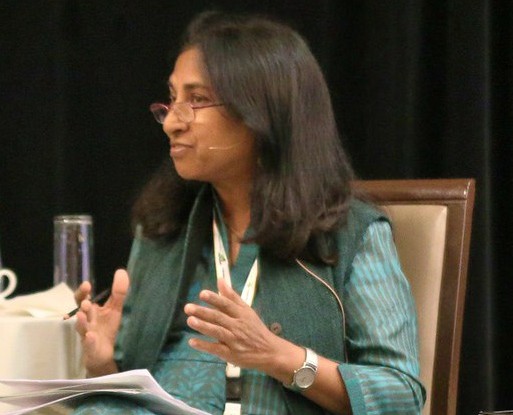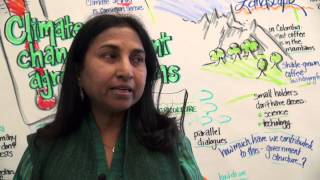
NEW YORK—Social inequality is also part of the landscape—and so must be accounted for in landscape approaches to managing agriculture and forests, a development economics expert urges.
A landscape approach is a way of taking a holistic approach to land-use management in order to balance social, economic and environmental goals.
Speaking in New York at the CGIAR Development Dialogues, Bina Agarwal from the University of Manchester and University of Delhi said that while the approach is useful, so far the term has typically been used in a politically neutral way that ignores power discrepancies within communities.
“Communities are not homogeneous; communities are unequal. They are divided by class, by caste/ethnicity and by gender. And those are the communities who will then make the landscape approach a success or not,” she said.
The inequalities are not just social, they are also economic, she says; they influence the distribution and access to resources.
“So if you’re talking about landscapes as resources, then you also have to recognize these inequalities,” she said.
When policy makers and others implement this approach – in which dialogue and negotiation are key – they need to empower the poorest and most disadvantaged members of the community to be able to negotiate what they want, Agarwal says.
“We talk about community involvement, but the question is, how do we ensure that the voices of the most disadvantaged, who have the most stake in local landscapes, in fact get heard, and influence the dialogue process?” she said.
TURNING TO ‘SELF-HELP’
Global trends make this issue increasingly important. Worldwide, those who are better off, and proportionally more men than women, tend to leave agriculture and move to the cities, she says. Women and older people are left behind tending the fields.
“It’s these people that tend to be disadvantaged in terms of their access to resources and voice in the local community,” Agarwal says – so the needs of these farmers risk going unheard in dialogues about development.
One way to address this, she suggests, is to build on the self-help groups that already exist in many South Asian, African and Latin American communities – whether they are women’s groups, microcredit groups, or movements of peasants, as with the Movimento dos Trabalhadores Sem Terras (landless workers’ movement) in Brazil.
“These are the groups through which you have greater likelihood of the voices of the poor being heard.”
“And these are the groups which could form the foundation for taking the landscape approach forward. This dialogue has to take place within communities (with the poorest being empowered), with policy makers, and also with academia, and scientists.
“All this requires multiple tiers of people being involved,” Agarwal said.
“I think the landscape approach can be effective if we recognize that it shouldn’t just talk for a few. We need to empower the many to speak for themselves.”
For more information about the topics in this article, please contact Bina Agarwal at bina_india@yahoo.com.
We want you to share Forests News content, which is licensed under Creative Commons Attribution-NonCommercial-ShareAlike 4.0 International (CC BY-NC-SA 4.0). This means you are free to redistribute our material for non-commercial purposes. All we ask is that you give Forests News appropriate credit and link to the original Forests News content, indicate if changes were made, and distribute your contributions under the same Creative Commons license. You must notify Forests News if you repost, reprint or reuse our materials by contacting forestsnews@cifor-icraf.org.
